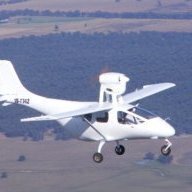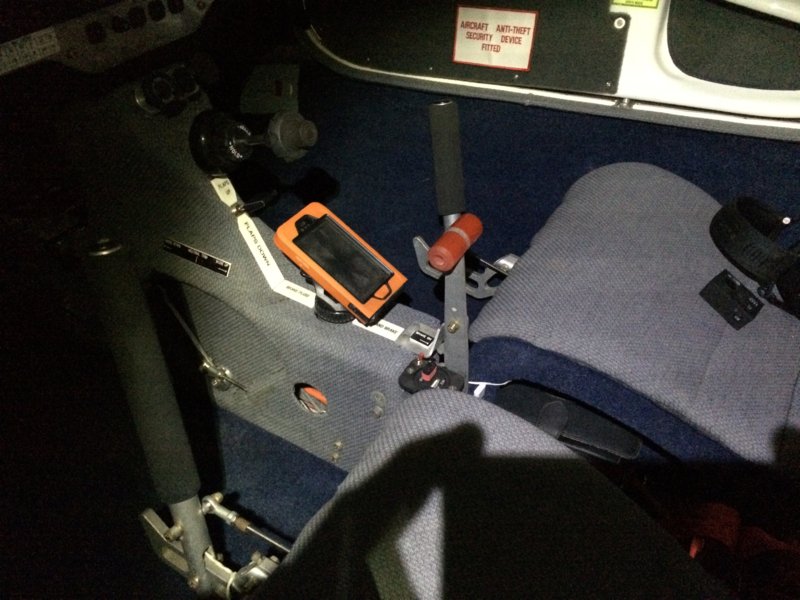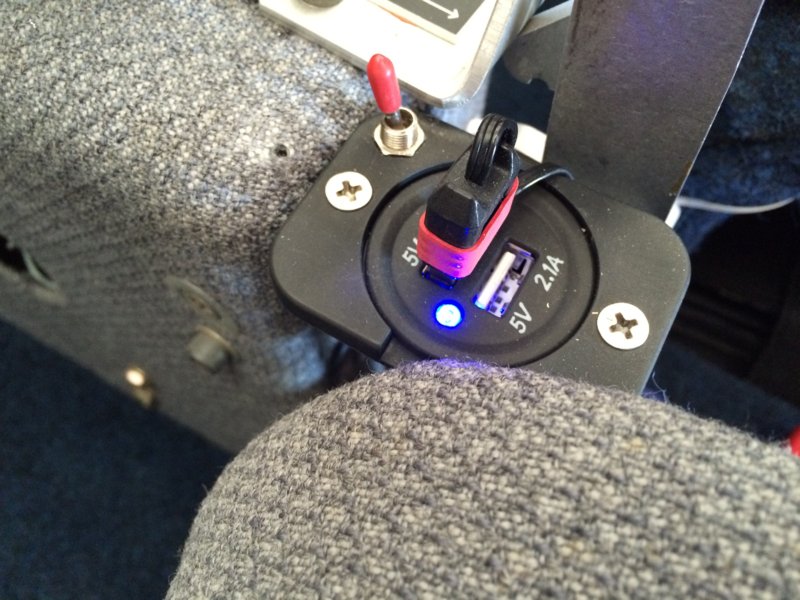-
Posts
846 -
Joined
-
Last visited
-
Days Won
3
Content Type
Profiles
Forums
Gallery
Downloads
Blogs
Events
Store
Aircraft
Resources
Tutorials
Articles
Classifieds
Movies
Books
Community Map
Quizzes
Posts posted by AVOCET
-
-
Some one should make a side valve liqid cooled jab head , Probly not as crazy as it sounds !
Mike ,
Ps , "i thunk of it first ", ( line out of O brother where art tho .)
Mike
-
 1
1
-
 1
1
-
-
I was all set to go untill i saw the first long range weather /for Easter ,
Looks like they got it right ,
Thats 3 flyins ive missed in a row , VFR minimums ,now thats a subject we dont talk about much ?
Mike
-
Sounds like a case of tradesman blaming their tools , when in fact , the poor old tool just carnt get it right !
-
Nice APRIL FOOLS JOKEImagine that you have the misfortune to be flying along on a cross-country jaunt when your airplane suffers engine failure which means that you will soon be back on the ground, BUT the terrain you are flying over presents no suitable, cleared landing patch - just trees or rock-strewn paddocks. You know that your arrival at ground level will result in the airplane being severely damaged. How do you handle the landing??Old advice is that you have to fly the airplane as far into the crash as you can. So the first requirement is to decide that the approach to landing will be the sort that would result in a 'greaser' in front of the Sunday crowd at your home field. All that remains is to decide how to fly the last two feet.In my opinion, the airplane should be side-slipped to the ground, trying to make the wingtip furthest from you hit first. Obviously, every attempt should be made to reduce ground speed to a minimum.
What's my reasoning? Well your moving airplane has Momentum, which is dependent on speed and weight.
M = mass x velocity
(Not quite the correct scientific words to use, but clear enough for this post). Momentum is a form of Energy, and this energy has to be dissipated before the airplane will stop. One way to dissipate the energy is to distort structures. That's why modern cars have front and rear 'crumple zones'. In a collision, the car's momentum distorts the material in the crumple zones so that the total momentum of the car is reduced before the cabin area starts to distort.
If the airplane is flown with the nose leading the motion, this sequence will happen.The front of an airplane usually contains a big mass of heavy metal (the engine) supported by relatively soft metal (engine bearers). In a front-on impact, the first parts of the airframe to bend and break are the bearers. This allows the cabin to collided with the rear of the engine, without much of a reduction in momentum. The next thing which can dissipate energy is the instrument panel, and then when it crumples, the occupants are next in line to get rid of the momentum. Have a look at some photos of WWl flying crashes. The pilot is usually slumped over the front of the cockpit, and the engine has been pushed back. Note that the wings are often only slightly damaged.
What I am suggesting is that by side-slipping to the ground and trying to have the wingtip furthest from you hit first, it will be the wing spar that will start collapsing first, and there are quite a number of feet of strong material to break up before the force exerted by the ground reaches the fuselage (Remember Newton's Second). The airplane may rotate around the collapsing wingtip, but this will have the advantage of making the engine collide with the ground at an angle to the longitudinal axis of the airplane, and may cause the engine to rotate away from the cabin, where you are sitting. This rotation with force you to the rear and centre of the cabin away from the collapsing instrument panel. However when it is your turn to do some momentum dissipating, you will stop your rearward motion and start to move forward, but towards the side of the cabin which is going to be a lot softer that the instrument panel and engine.
So my suggestion for surviving a crash landing onto unforgiving terrain is to:
1: Fly the airplane into the crash as slowly as possible, while still maintaining directional control.
2: Side-slip your approach to the impact point, with the wing tip furthest from you leading the motion.
3: Prepare for the impact of your body with the side of the cabin on the opposite side of the airplane to the wingtip that hit first.
There is one thing that will affect your decision as to which wingtip hits first - if you are flying with a passenger in a side-by-side, you have a moral and legal Duty of Care, to place your passenger's welfare above your own. In that case, you land on the wingtip on your side. "Greater love hath no man ..."
I'd suggest that as an exercise in airplane control, you shoot some circuits on a calm day and make each landing a power off, side-slip approach, so that you get a feeling for what the situation looks like.
WARNING and DISCLAIMER
Before conducting side slip manoeuvres in landing configuration with flaps, consult your airplane's Operator's manual to see if such manoeuvres are permitted.
Old Man Emu
Got a good thread going though , well done .
Ill refrain from my encounter with " the tree " story , its in an earlier post.
Cheers .
-
 1
1
-
-
-
-
Cast ion valve guides , they were in the first batch of 10 heads , they seem ok so far .
Mike
-
Airborne Edge X Trike 582 I changed the small plug socket to a normal car sized one that fits the Garmin 196 GPS charger. Problem is - causes a lot of static - unusable Works fine with batteries in GPS Any ideas?
-
. Mine are the cast iron type and were checked , heads off at 56 hrs , . Dont know where else the oils comming from if not the the rocker tubes ??? MikeHello Mike How many hours have you done on the LCHeads, I think my head tension was 20 I think as recommended. I tryed over size orings and sealant the oil leak must have bean coming from some where else. My heads where from early batch nothing but problems. Have fitted air cooled heads back on I find it hard to beleive you have no problems if you have read my other thread 4 loose valve guides I would be checking yours if I where you.-
 2
2
-
-
I have all the parts for LCH conversion 2200 jabiru twin water pumps radiator all fittings ARE YOU GAME ??????
-
 1
1
-
-
Whats so funny ??What tention are you torquing to ,??? i do mine to 16 ft / lbs and have no trouble & they dont need nipping up at each sevice , I had one of the first batch of ten . The factory eased out the valve guides after one was tight ish at start up , The oil leaks at the pushrod tubes were fixed by using a slightly larger O ring . Head temps 90/100 c Coolent temp , today was 93 c cool morning 35c day/ 115 c,i wouldnt recommend flying at higher temps ( any rec plane ) They do require fitting by competent folk . Cheers Mike -
Any one in it ?
-
What tention are you torquing to ,??? i do mine to 16 ft / lbs and have no trouble & they dont need nipping up at each sevice ,
I had one of the first batch of ten . The factory eased out the valve guides after one was tight ish at start up ,
The oil leaks at the pushrod tubes were fixed by using a slightly larger O ring .
Head temps 90/100 c
Coolent temp , today was 93 c cool morning
35c day/ 115 c,i wouldnt recommend flying at higher temps ( any rec plane )
They do require fitting by competent folk .
Cheers
Mike
-
 1
1
-
 1
1
-
-
Now that top gears gone , Whats next ???
Maybe enlist 3 loudmouth hoons from the " Australian Aviation sector to Test Fly every aircraft on the register , do beat ups ! Test the envelope , get it all on tape , even the stuffups !!!
Mike
-
 1
1
-
 1
1
-
-
Time to come home Phill , !!
-
Might be able to help after easter ,
Ill be going to melb , visiting my old mum ,and returning though Adelaide , pm me .
Mike
-
If your flying down as far south as Wilpena pound there's
a couple of options Rawnsley Park , or Wilpena resort ,
Both have runways , pick up service
-
I like Jeremy, we need more blokes like him on air. Blokes who say it how it is and not go around like a bunch of pansies being politically correct all the time.
-
 1
1
-
-
12 or so years back i rang Womera to ask to come in , they said yes , sure $400.00 landing fee .
Mike
-
 1
1
-
-
Whatever charges ya battery
-
"Don't " , yeer well , im ,Don't ing ....IF the weather's making you wonder whether..... Don't ..... Nev-
 1
1
-
-
T
The weather allways ,makes me wonder !IF the weather's making you wonder whether..... Don't ..... NevMike
-
Was going for first flight for the season ,
To much wind today ,
Then i noticed the calendar ,
No cold shiver , just a chuckle ,
Im not super /s ,
But theres mo way im getting out of bed today !!
Just kidding , plenty to do
Mike
-
 1
1
-
 2
2
-
-
Vagabond larrican , on $1 mill aus an episode ?
Wouldn't mind being tarred with that brush!!!
Mike
-
 1
1
-
 1
1
-





Liquid cooled heads
in Jabiru
Posted
For my pusher application on the Avocet .
Its already fuel / inj.
The only thing thats stopping me thus far is the return oil flow down the pushrod tubes .
Definably wont be a Jabiru after this !
Mike